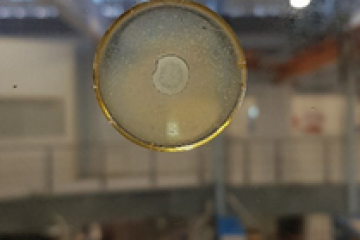After international trade of biofuels, solid biomass flourishes
Same risks, same solutions?
Bio-based businesses keep steadily moving towards the creation of new food, industrial and energy products. Various biomass streams, from different origin, and going through a variety of conversion routes, cause different levels of environmental and social impacts. Pressure on arable land, peat lands, forested regions, and water use is amounting high. Labour and property rights may be severely endangered in countries of biomass origin, especially in those countries with weak law enforcement instruments or with a poor track record on these issues. Key aspect for further development and upscale of these bio-based businesses is to implement at proper sustainability proofs. The proof of biomass sustainability gives confidence to consumers, and allows for the implementation of supporting policies by States.
The European Union requires sustainability proof for biofuels, but not for solid biomass. This policy gap resulted in the fact that some Member States have defined their own –but differing- biomass sustainability obligation. Also some of the largest energy utilities have defined their own voluntary programs. While trade in solid biomass is growing and feedstock competition with second-generation biofuels is upcoming there is an urgent need for a more comprehensive and more standardised approach to sustainability criteria for solid biomass.
The principle of value in a bio-based economy
The EC supported Knowledge Biobased Economy (KBBE) network has estimated that the bio-based economy in Europe had an annual turnover of 2 trillion Euros in annual turnover in 2009, and employed 21.5 million people, half of them in agricultural activities. These numbers are definitely worth attention of entrepreneurs, utilities, petrochemical industries, and policy makers, especially in the midst of the current economic crisis.
Dedicated programs implemented in the EU, the US, and other regions such as Canada, Japan and Malaysia, are promoting industrial crops and other sources of biomass for high-value products such as biobased materials for the health industry. At the same time we see South America and Africa to develop themselves as supply regions.
Despite this rapid growth, the biomass industry is still volatile and unpredictable. Access to sustainable feedstock in sufficient quantities, guaranteed quality and competitive prices is a market requisite to develop a robust bio-based economy, but it is not sufficient to move towards a sustainable economy. Determining the best and highest value use of biomass through smart cascading and reuse of waste materials is a complex matter, though required. Value is established by anticipation of future demand and benefits, foreseen changes in market and policies, competition, market substitution and consistent use of the product. Doing so, while at the same time ensuring sustainability and food security, requires a joint effort between economic operators and policy makers for levelling the playing field and for setting the course of a bio-based economy.
The biofuels business has shown that uncertainties in policies and regulations cause the market to stagnate. Companies await upcoming decisions that will have an effect on their future strategies. These uncertainties should be avoided in the solid biomass market for electricity and heat now, and soon for the rest of products in the bio-based economy. This is possible by providing clarity in long-term policy objectives especially with regard to sustainability. A step-by-step approach can give the market a direction while the specific requirements are designed with transparency and with the collaboration of stakeholders along the way.
The case of biobased energy products
Pike Research forecasted a few months ago that worldwide capital investment in biomass infrastructure will be maintained at around 30 billion USD annually for the next five years. Europe is by far the most important market for wood pellets; biomass consumption for heat and power in Europe is expected to double from now and until 2020. The wood pellets trade statistics from the European Biomass Association (AEBIOM) show an increasing trade between various world regions; demands are not only increasing in Europe and in the US but also in Asian countries such as Korea or Japan. Consumption of pellets in the European Union steadily increased from 3.8 million tons in 2005 to 9.8 million tons last year. Production in the EU grew from 2.6 million tons in 2005 to 9.2 million tons in 2010. EU imports in 2010 amounted 6 million tons, with Denmark, the Netherlands, Italy, Sweden and the UK as the largest importers. Canada, the US and Russia were by far the main exporters to the EU, but recently also exports from South America, Africa and Australia have started.
The wood pellets market and consumption has grown to such size now that large power producers have occasionally the need to re-trade their pellets to keep storage costs under control. So far this has been very complicated due to the lack of a uniform approach with respect to supply contractual terms, technical specifications of the product, and sustainability principles applied by each company.
On November 4 of this year, the Dutch power and gas exchange APX-Endex opened in Amsterdam the world's first industrial wood pellets exchange. At the same time, they announced that they expect global pellets market to grow to 40 million tons by 2020 compared to current 13 million. This is 200% growth in only 8 years.
Wood pellets markets though depend on continuous government support. Pellets price is expected to fluctuate around current 135 €/ton for at least two more years, while carbon price is set to sometimes less than half. Government support is usually based on sustainability requirements; therefore uniform and standardised approaches are needed – not only between countries but also between sectoral policies. These new market requirements were not clearly foreseen two years ago when the European Renewable Energy Directive (RED) was established. Now, a more common approach may be needed to harmonize the role of biomass in the RED, the Fuel Quality Directive (FQD) and the Emissions Trade Scheme (ETS).
Upcoming solid biomass markets in an uncertain policy context
So far, sustainability standards have been mainly developed for biomass for energy purposes – and especially for biofuels (read our summer 2010 and winter 2011 newsletters: “A new era of the Bioenergy Industry: Sustainability criteria shaping the market” and “Roadmap to an organized global commodity market of bioenergy carriers”). As it was concluded from the recent Consultation process at the European Commission (EC), there is a large support for binding sustainability criteria for solid biomass. Replies on the scope of these sustainability criteria were, however, mixed ranging from a simple copy of RED requirements to solid biomass to a more extensive set of criteria including also principles of sustainable forest management. No agreement has been reached so far. For the time being, the EC has given only a set of recommendations concerning the sustainability of solid biomass (GHG savings, biodiversity protection, no conversion carbon rich land, stimulate higher conversion efficiencies) and will assess its effectiveness by end of 2011. However no final decision is expected yet. Similar uncertainties in levelling the playing field for the growing wood pellet markets in the US exist, where no binding sustainability criteria for solid biomass have been developed either.
Nonetheless, the EU Timber Regulation, coming into effect in 2013, will require producers to take concrete steps that minimize the risk of putting illegally harvested timber and timber products on the EU market. Producers will have to use a traceability system, which will enable the EU to ascertain the legality of the products. A similar Law has been developed in the US (the Lacey Act) prohibiting the commerce in illegally sourced plants and their products — including timber and wood products. It requires importers to declare the country of origin of harvest and species name of all plants contained in their products.
For bio-based products, no quantification or qualification of sustainability criteria exists yet. The US “Biobased Product Labelling Program” identifies biobased products based on its bio-based content. The recently established CEN/TC 411 on bio-based products is planning to produce a package of standards on terminology, determination of bio-based content, sustainability criteria and lifecycle analysis (LCA). Plans to create a label of biobased products in Europe are under development as well.
Developments on EU-country level are not homogeneous either. National policies exist or are currently developed in Belgium, the UK and in the Netherlands to safeguard the sustainability of solid biomass. The Belgium systems in Wallonia and in the Brussels region are based upon avoided CO2 emissions with respect to a defined reference and require a traceability of the supply chain. In the UK, the Renewable Energy Certificates (ROCs) have to be linked to binding sustainability criteria as per 1 April 2013. The Netherlands has the so called ‘green deal’ between the government and energy sector to keep the share of cofiring at 10% in period 2012-2015 with binding RED sustainability criteria. Various other European countries already cover limited sustainability aspects (e.g. only on end-use efficiency or sourcing) in their national schemes.
The differences on EU member state level aim at meeting own national challenges. For the market, this results however in a fragmentation of supply, higher costs and a separate sourcing of biomass if power plants are in more than one market. SQ consult recently corroborated during a private assignment the differences on national approach towards the verification of sustainability criteria for biofuels in a benchmark of national systems.
It becomes obvious that a single set of sustainability criteria, and a limited and small number of standards fully covering them, would be preferable for the real development of the bio-based economy.
Harmonization or proliferation?
The market is anticipating on policy developments. Business-to-business standards to safeguard the sustainability of solid biomass already exist for longer time. Well-known examples are the Green Gold Label from RWE/Essent, the Drax sustainability requirements or the Laborelec system, all of them developed by large energy utilities.
| Green Gold Label | Electrabel / Laborelec | Drax |
|
|
|
|
|
|
Other examples of voluntary standards or initiatives are the NTA8080/8081, the “EN-plus” label for wood pellets or the Blue Angel Label in Germany, who has recently included chips and pellets for stoves and boilers.
The Biomass Exchange allows wood pellets to be certified under one of three utilities certification schemes mentioned above. Though this is a good start, all these three systems are not compatible, and therefore they do not help to the full establishment of an international commodity market.
Seven large energy companies have formed the International Wood Pellet Buyers Initiative (IWPBI). They are Dong Energy of Denmark, Drax International of the UK, Germany's Eon, Laborelec/GDF Suez of Belgium, RWE/Essent, Delta from the Netherlands, and Sweden's Vattenfall, all together covering 70% of the European market share and consuming about half of global production of wood pellets,. IWPBI aims to develop one common sustainability verification scheme, making use of existing national policies and standards. On November 10 of this year, an IWPBI working group agreed on a set of sustainability criteria for solid biomass. The proposed system is now waiting for the official approval by the utilities involved and on an implementation plan. This market initiative may help to overcome intra-European differences. Approval is expected by the end of this year. IWPBI hopes that the EC will then follow their standard.
IWPBI Sustainability criteria
Verifiable with indicators
- Principle 1: GHG: Greenhouse gas emissions savings of at least 60% with respect to fossil fuel reference
- Principle 2: CARBON STOCK: No biomass production at expense of carbon reservoirs
- Principle 3: BIODIVERSITY: Biomass production does not interfere with nature protection purposes
Supported by qualitative assessment
- Principle 4: SOIL QUALITY: Soil quality must be maintained
- Principle 5: WATER QUALITY: Water is not exhausted and negative impacts are avoided
- Principle 6: AIR QUALITY: Negative impacts on air are avoided
- Principle 7: LOCAL FOOD AND WATER SUPPLY: Food, or specific biomass essential for community subsistence and water supply are not endangered
- Principle 8: SOCIO ECONOMIC PERFORMANCE: Property rights are preserved, and there is contribution to local prosperity, welfare of employees and local population
Covered separately
- Principle 9: CORPORATE RESPONSIBILITY: Code of conduct is preserved
Other large utilities such as Electricité de France or Enel have started their analysis on these topics; however they have not yet led to proposed criteria, and potentially, they could adopt a different set of sustainability criteria for their operations.
The next step is to find or to create the scheme with the right governance structure and costs that could implement the verification of above principles. This is not a simple task and may end up in different requirements along the supply chain, as is currently the case for biofuels, resulting again in different levels of assurance and possible distortion of the market. SQ Consult is currently studying these differences for the seven voluntary systems approved by the European Commission for the biofuels market.
These developments show that Europe has now come to a point to decide whether the establishment of sustainability criteria should be left to the market or not. Leaving it to the market creates a large risk for proliferation of standards with different requirements; undermining the eligibility and reliability of systems that are trustworthy. Companies may opt for the easiest certification option – or not at all – which will hamper the competitiveness and mobilization of sustainable solid biomass.
We would strongly advise to the European Commission to uniform reliable sustainability obligations through binding legislation. Sustainability obligations for solid biomass have to be well-founded and should not be a simple one to one copy of the RED or of what is existing on the market. Furthermore, some guidelines on governance structure and expected levels of assurance for the schemes verifying sustainability obligations would be welcome to avoid the current problems that the biofuels are facing to demonstrate their compliance with sustainability criteria.
Strategies in the market
Although the existing harmonization initiatives are highly appreciated, they have their limitations in scope in terms of geographical coverage (mainly northern Europe), product coverage (pellets) and stakeholder coverage (large to medium markets). A European solution, preferable coordinated with US biomass sustainability developments, could engage all stakeholders and countries involved in this discussion.
The lack of a common, long-term strategy on sustainability of biobased products for energy and materials may lead to a competition of biomass resources, only based on prices and volumes. On policy level, clear choices have to be made how resources can be optimally used and what is to be expected from the market. A common European bioenergy market will create an efficient market with high liquidity and flexibility to move products across borders.
This newsletter is based on recent work conducted by SQ Consult; more information on these studies is available at request. The author thanks Jinke van Dam and Laetitia Ouillet for their valuable contribution to writing this article.




